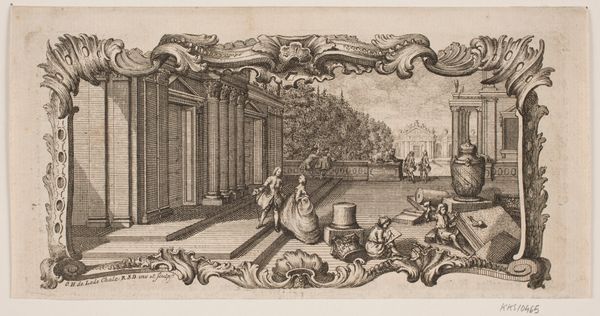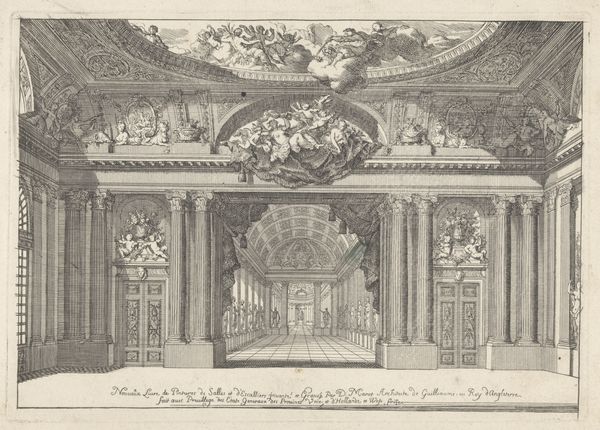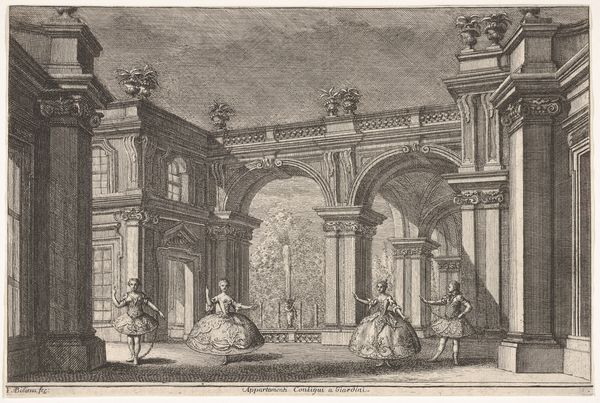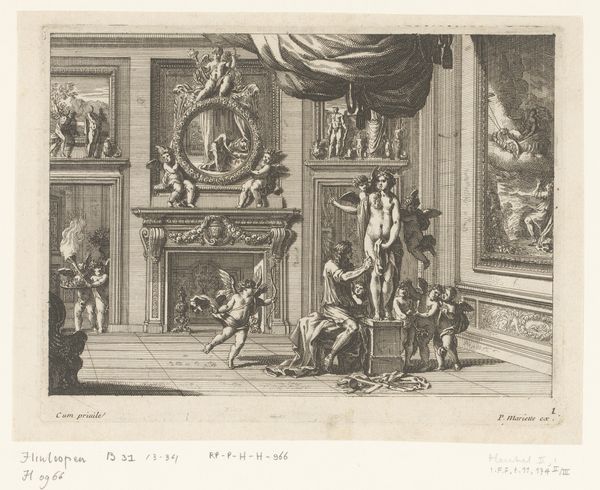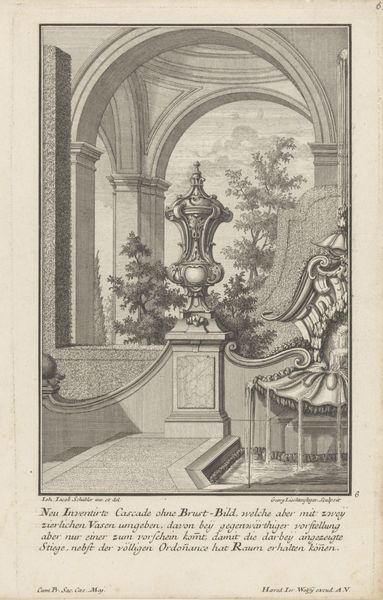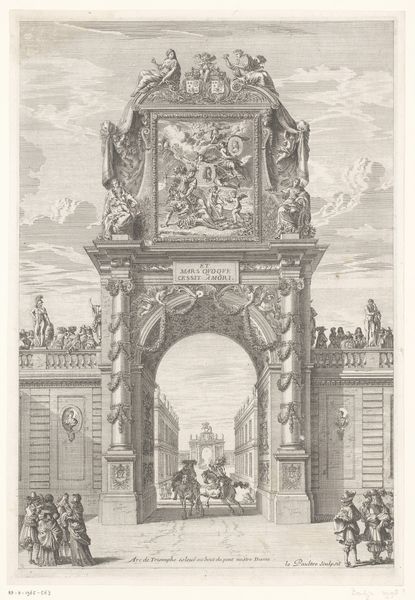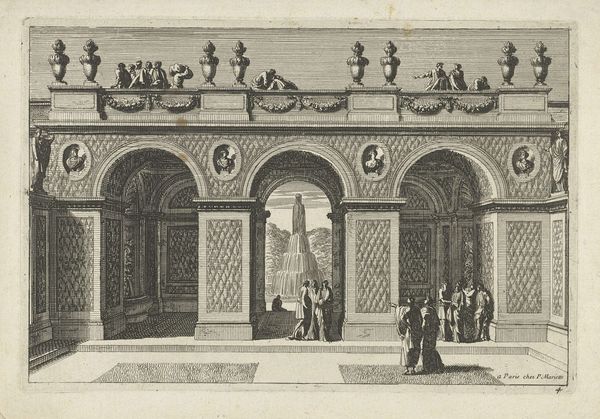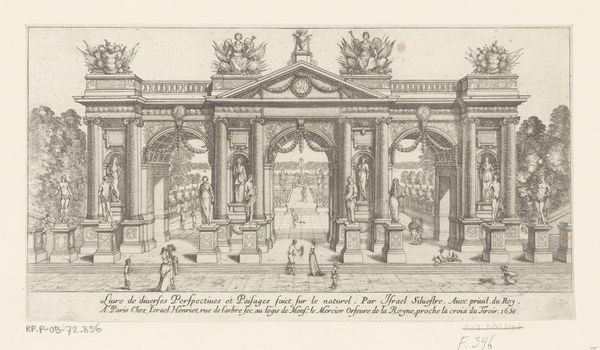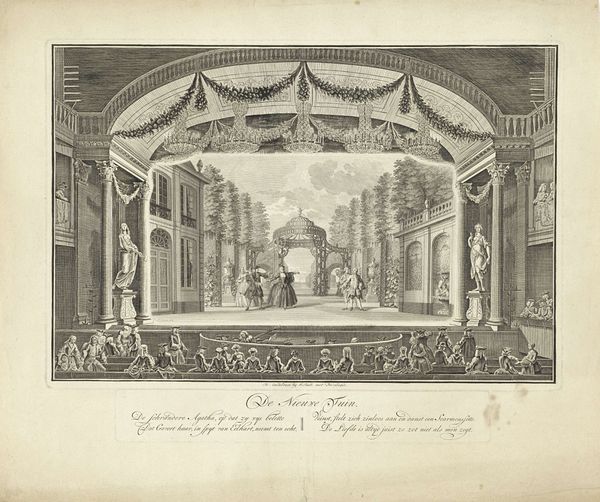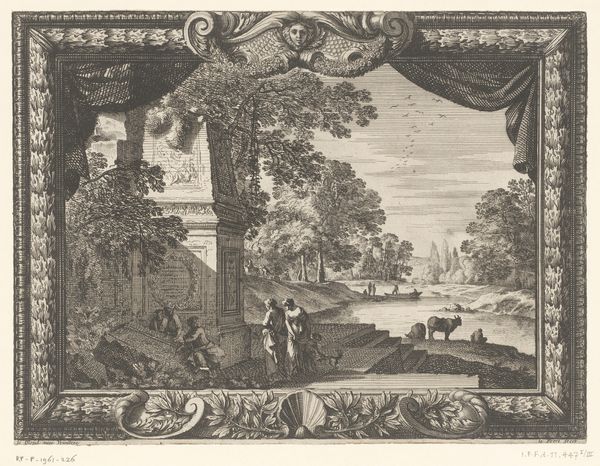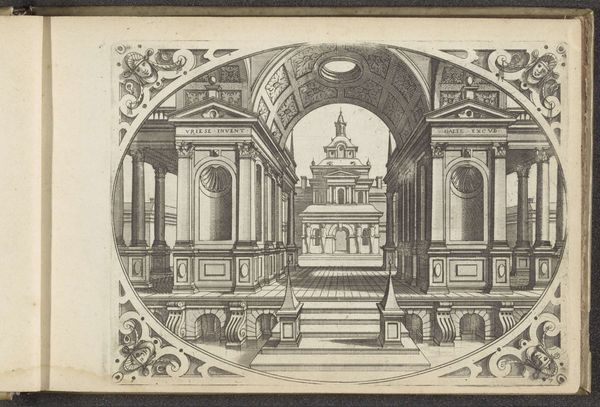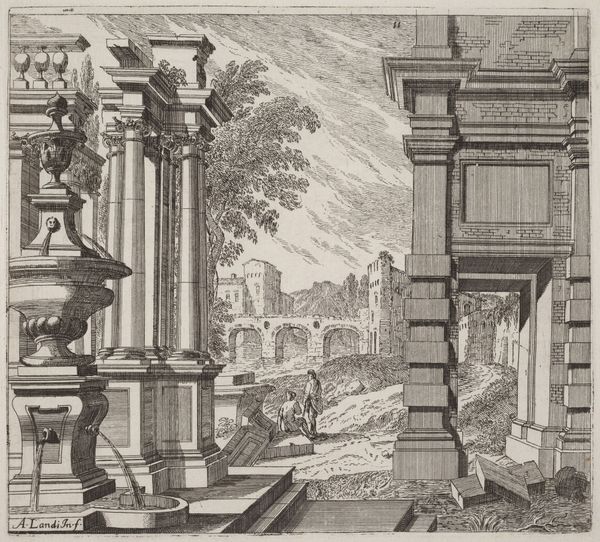
print, engraving, architecture
#
ink drawing
#
baroque
# print
#
cityscape
#
genre-painting
#
engraving
#
architecture
Dimensions: 107 mm (height) x 176 mm (width) (plademaal)
This vignette was made by Odvardt Helmoldt de Lode in the 18th century as an etching. Etching is a printmaking process that relies on acid to bite lines into a metal plate. The plate is first covered with a waxy, acid-resistant ground. The artist then scratches an image into the ground with a needle, exposing the metal. When the plate is immersed in acid, the exposed lines are etched, creating grooves. The deeper the grooves, the more ink they will hold. Once the ground is removed, the plate is inked, and then wiped clean, leaving ink only in the etched lines. Finally, paper is laid on the plate, and both are run through a press under high pressure, transferring the ink to the paper. In this vignette, the fine, precise lines achieved through etching contribute to the overall impression of refinement and control, reflecting the tastes and values of the 18th-century elite. The printmaking process itself, with its reliance on skilled labor and specialized equipment, underscores the social and economic context in which this image was created and consumed. Appreciating the material and the way it was worked allows us to see past the aesthetic, and to understand the artistic, social and economic context of the artwork.
Comments
No comments
Be the first to comment and join the conversation on the ultimate creative platform.
